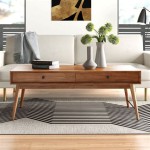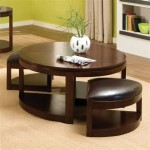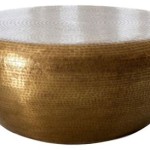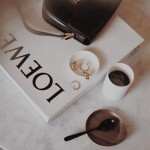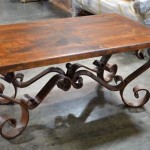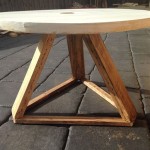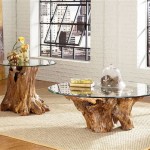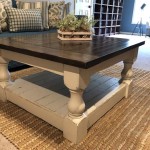Making the Most Out of Coffee Table Seats
Coffee table seating, encompassing stools, ottomans, benches, and poufs, offers versatile and often overlooked solutions for maximizing seating capacity and functionality within a living space. These pieces transcend mere footrests, serving as adaptable seating options, storage solutions, and design elements that can significantly enhance the overall aesthetic and usability of a room. Effectively integrating coffee table seating requires careful consideration of spatial constraints, design preferences, and practical needs.
The selection and placement of coffee table seats should be a deliberate process, taking into account the existing furniture arrangement, the room's dimensions, and the intended use of the space. Understanding the various types of coffee table seats available, their individual benefits, and potential drawbacks is crucial for making informed decisions that optimize both comfort and style.
Understanding Different Types of Coffee Table Seats
Several distinct types of coffee table seats exist, each offering unique advantages and appealing to different design sensibilities:
Ottomans: Ottomans are typically upholstered, often matching the sofa or providing a contrasting texture and color. They come in various shapes and sizes, including square, rectangular, round, and even uniquely shaped designs. Some ottomans feature built-in storage, making them particularly useful in smaller spaces where maximizing storage is a priority. Their soft, padded surfaces make them comfortable for both seating and resting feet.
Stools: Stools offer a more minimalist aesthetic compared to ottomans. They are available in a wide range of materials, including wood, metal, and upholstered options. Stools can be easily tucked away under the coffee table when not in use, making them ideal for spaces where flexibility is key. Backless stools are generally preferred for coffee table seating as they take up less visual space.
Benches: Benches provide a longer seating surface, accommodating multiple people simultaneously. They are particularly well-suited for larger living rooms or areas where frequent gatherings occur. Benches can be upholstered for added comfort or feature a more rustic, exposed wood design. Some benches also offer storage compartments, similar to ottomans.
Poufs: Poufs are typically soft, unstructured seats made from materials like leather, fabric, or knitted yarn. They offer a casual and relaxed seating option, often adding a touch of bohemian or eclectic style to a room. Poufs are lightweight and easily movable, allowing for flexible seating arrangements. Their lack of rigid structure can be both a benefit and a drawback, depending on personal preference and desired level of support.
Optimizing Space and Functionality with Coffee Table Seats
Strategic placement and utilization of coffee table seating can significantly enhance a room's functionality and spatial efficiency:
Maximizing Seating Capacity: In smaller living rooms, coffee table seats provide valuable additional seating without overcrowding the space. When guests arrive, these seats can be easily pulled out for extra seating. During everyday use, they can be tucked away, preserving valuable floor space. The key is to choose seats that are the appropriate height in relation to the coffee table and sofa, ensuring comfortable interaction and conversation.
Creating Flexible Layouts: Coffee table seats offer flexibility in room arrangement. They can be moved around to create different seating configurations, adapting to various activities and social gatherings. For example, they can be positioned around the coffee table for game nights, arranged in a semi-circle for conversations, or placed near a window to enjoy natural light. Their portability makes them ideal for creating dynamic and adaptable living spaces.
Utilizing Storage Features: Opting for coffee table seats with built-in storage can be a game-changer in smaller apartments or homes. Storage ottomans and benches provide a concealed space to store blankets, pillows, books, or other household items, decluttering the living area and maximizing storage potential. When selecting storage seats, consider the size and accessibility of the storage compartment to ensure it meets your specific needs.
Defining Zones Within a Room: Coffee table seating can be used to define different zones within a larger living space. For instance, a bench placed behind a sofa can create a distinct reading nook, while a group of poufs arranged around the coffee table can define a conversation area. This technique is particularly useful in open-plan living spaces where visually separating different functional areas is essential for creating a cohesive and organized environment.
Integrating Coffee Table Seats into Your Décor
Coffee table seats should not only be functional but also aesthetically pleasing, complementing the existing décor and enhancing the overall style of the room:
Coordinating with Existing Furniture: When selecting coffee table seats, consider the style, color, and texture of your existing furniture. Aim for a cohesive look by choosing seats that complement the sofa, chairs, and coffee table. This doesn't necessarily mean matching everything perfectly, but rather selecting pieces that share a common design element, such as color palette, material, or style. A contrasting color or texture can also create visual interest, but should be done thoughtfully to avoid clashing.
Playing with Color and Texture: Coffee table seats offer an opportunity to introduce pops of color, texture, and pattern into the room. A brightly colored ottoman or a textured pouf can add visual interest and personality to a neutral space. Consider using contrasting fabrics, such as velvet, leather, or linen, to create a layered and inviting look. However, be mindful of the overall color scheme and avoid overwhelming the space with too many competing patterns or colors.
Considering the Room's Style: The style of coffee table seats should align with the overall style of the room. In a contemporary space, minimalist stools or sleek ottomans with clean lines would be appropriate. In a more traditional setting, upholstered benches or ornate ottomans with tufted details would be a better fit. Consider the architectural style of the room as well, as historical homes may require different seating options compared to modern apartments.
Adding Personal Touches: Personalize your coffee table seating by adding throws, pillows, or decorative accessories. A soft throw draped over a bench or a decorative pillow placed on an ottoman can add comfort and visual appeal. Consider adding a small tray to an ottoman to create a makeshift side table for drinks or snacks. These small touches can transform a functional piece of furniture into a stylish and inviting element of your living space.
Height Considerations: Seat height is a critical factor in selecting coffee table seats. The height should be appropriate for both comfortable seating and ease of access to the coffee table. Ideally, the seat height should be slightly lower than or equal to the height of the sofa cushions. This allows for comfortable conversation and easy access to the coffee table for drinks or snacks. Avoid selecting seats that are significantly higher than the sofa, as this can feel awkward and uncomfortable.
Material Durability: The choice of material should reflect the intended use and traffic in the living area. For high-traffic areas, durable and easy-to-clean materials like leather, performance fabrics, or tightly woven textiles are recommended. These materials can withstand everyday wear and tear and are less prone to staining. For lower-traffic areas, more delicate materials like velvet or silk may be appropriate, but should be treated with care. Consider the pets and children in the household when selecting materials, as some materials are more resistant to scratches and stains than others.
Movement and Accessibility: Ensuring easy movement and accessibility around the coffee table and other furniture is paramount. Avoid overcrowding the space with too many coffee table seats, as this can impede traffic flow and make the room feel cramped. Consider the size and shape of the seats in relation to the available space, and ensure that there is ample room to walk around the coffee table and other furniture without bumping into anything. Lightweight and easily movable seats are ideal for creating flexible seating arrangements.
Testing Before Purchasing: Whenever possible, test out the coffee table seats before purchasing them. Sit on them, move them around, and visualize how they will fit into your living space. Consider the comfort level, the ease of movement, and the overall aesthetic appeal. If purchasing online, read reviews carefully and check the return policy in case the seats do not meet your expectations. Taking the time to test out the seats beforehand can prevent disappointment and ensure that you are making a worthwhile investment.

Round Coffee Tables For A More Usable Space

More Like Home Coffee Table With Nesting Storage Ottomans Day 7

How To Build A Coffee Table From Rough Wood Diy Woodworking

Coffee Table Height Higher Or Lower Than Your Sofa

34 Stylish Banquette Ideas For Every Room In Your Home

How To Choose The Right Size Shape Coffee Table For Your Living Space

15 Designer Tips For Styling Your Coffee Table

How Far Should A Coffee Table Be From Sofa 2024 Edition 2modern
:max_bytes(150000):strip_icc()/ScreenShot2021-10-04at11.22.29AM-675fe340fcaf408eb32ee9c30c26e88a-6f92f98c765840dbba7da633271b22fc.png?strip=all)
28 Coffee Table Decor Ideas For Every Design Style

15 Designer Tips For Styling Your Coffee Table
Related Posts

